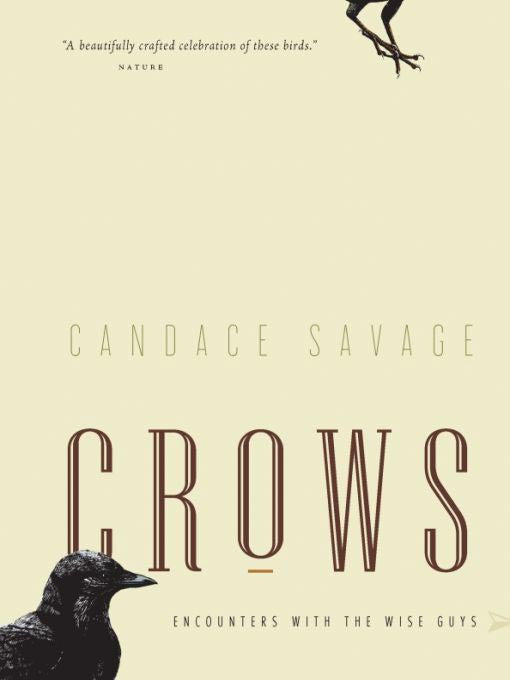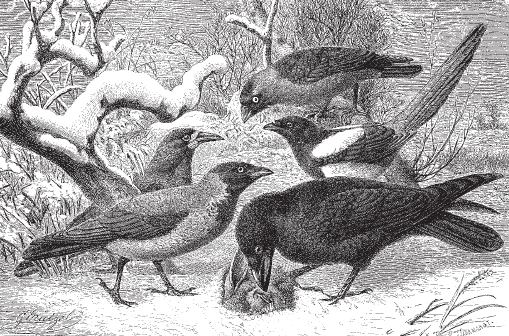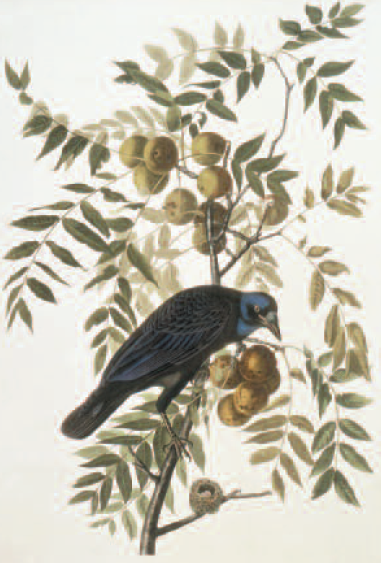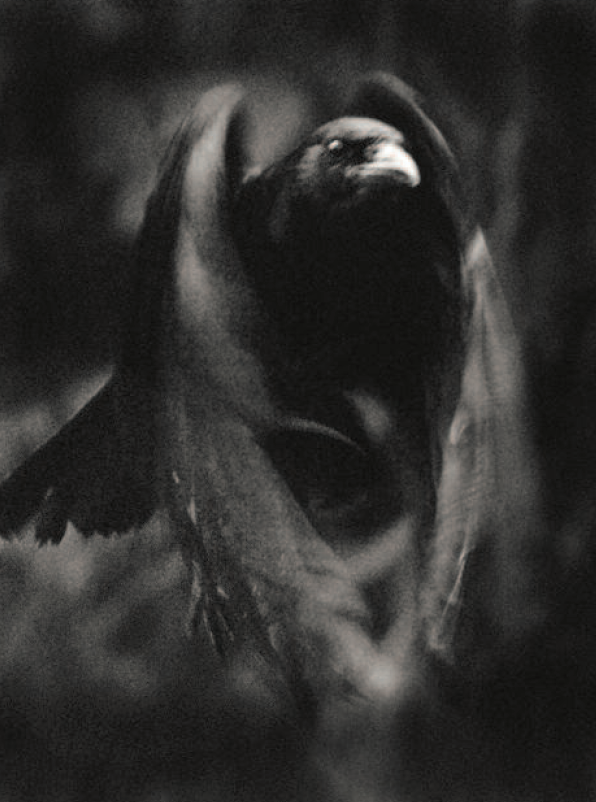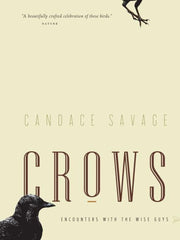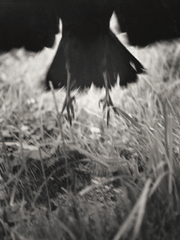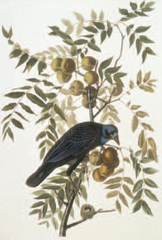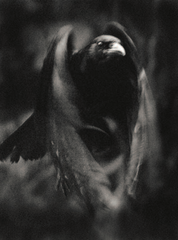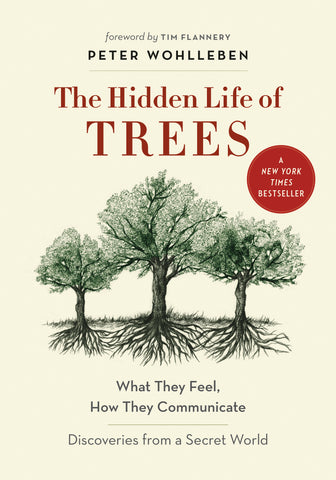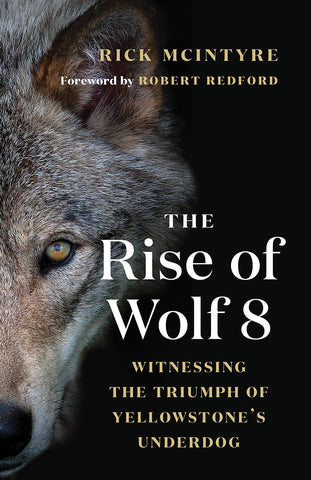Crows
Encounters with the Wise Guys of the Avian World
- ISBN: 9781771640855
- Tags: Candace Savage, Nature & Environment,
- Dimensions: 6.5 x 8.5
- Published On: 4/18/2015
- 136 Pages
- ISBN: 9781771640862
- Tags: Candace Savage, Nature & Environment,
- Published On: 4/18/2015
- 136 Pages
A treasure trove of information and anecdotes about the wise guys of the avian world, the bright-eyed, black-winged members of the Genus Corvus, or ravens and crows, now with stories about these bright birds.
This revised and expanded edition of Candace Savage’s best-selling book about ravens and crows is enhanced by additional paintings, drawings, and photos, as well as a fascinating selection of first-person stories and poems about remarkable encounters with crows, including an account by Louise Erdrich. Based on two decades of audacious research by scientists around the world, the book also provides an unprecedented glimpse into corvids’ intellectual, social, and emotional lives. But whether viewed through the lens of science, myth, or everyday experience, these amazing birds take your breath away.
Published in Partnership with the David Suzuki Institute.
Candace Savage is the author of more than two dozen books, including A Geography of Blood, which won the Hilary Weston Writers’ Trust Prize for Nonfiction. She divides her time between homes in Eastend and Saskatoon, Saskatchewan.
"Savage has compiled Crows, a handsome and charming compendium of facts, fables, research, photos and illustrations about the corvine world, which makes for delightful, offbeat reading."
-Stewart Brown, The Hamilton Spectator
"Crows celebrates crow abilities, surveying their behavior, natural history, and more . . . a most digestible, intriguing survey."
-Midwest Book Review
"Candace Savage's Crows is a beautifully crafted celebration of these birds."
-Nature Magazine
"Savage, who also describes her avian subjects as sophisticated, fascinating and beautiful, is so intrigued by corvid behaviour that Crows is her second book on the subject."
-Victoria Times Columnist
"Candace Savage's Crows is a beautifully crafted celebration of these birds . . . she . . . uses every opportunity to introduce sound evolutionary and ecological concepts, including good descriptions of recent research on crow communication, breeding biology and . . . ecology."
-Alex Kacelink, Nature Magazine
"ìThis is a readable piece of popular nature writing, accessible because of a deft juxtaposition of interesting anecdotes and firsthand accounts of scientific discoveries."
-Canadian Literature
"Nature writer Savage celebrates crows; and provides a lot of information about them; in this lovely little book."
-Globe & Mail
"Part of the joy of reading Crows . . . is the iconoclastic energy it draws from busting myths about birds in general and crows in particular . . . surprising avian revelations are contained within the pages of Savage's glorious festival of crow arcana."
-Clem Martini, Alberta Views Magazine
"Threaded through the scientific studies and anecdotal accounts are corvine folk-tales and mythology . . . The combination of Savage's accessibility, the sheer depth of her research, the slight anthropomorphism, and the sparkling quality of her writing do more than explain the world of the corvine family. There's a startling intimacy to this literary encounter, from which most readers are likely to emerge well educated, informed, and curiously changed. That's a keen accomplishment for little more than 100 pages."
-Robert Wiersema, Quill & Quire
From Chapter One: The Birds in Black
On an island in the South Pacific Ocean, somewhere west of Fiji, a sleek black crow is poking around in the greenery of a sunstreaked rain forest. With its senses sharply focused on the search for food, the bird hops from branch to branch and from plant to plant, jabbing its stout beak into the bases of palm leaves and cocking its head to inspect crannies in the bark. Insects are hidden in there—juicy centipedes, weevils, and grubs—but many of them are out of reach, buried deep in the vegetation or curled up at the bottom of wormholes drilled into the tree trunks.
An ordinary bird might be stymied by these difculties, but not our crow. Without hesitation, it flies to a nearby tree and picks up a twig that it had left there a few minutes earlier. At first glance, the stick doesn’t look particularly special: it’s just a sprig from a native deciduous tree, Elaeocarpus dognyensis, that has been stripped of leaves and bark. On closer examination, however, you can see that the stump end of the twig, where the crow snapped it o. the branch, has been nibbled to form a tiny hook. And watch what the crow can do with it! Grasping the twig in its bill, the bird flies directly back to its foraging site, positions the stick so that one end is braced against the side of its head, and then deftly inserts the implement, hook first, into the crevice.With a few quick flicks of its beak, the bird works the twig back and forth, then pulls it out, with a tasty insect squirming on the end of it. Crow, the Tool User, in action.
This techno-savvy bird is a New Caledonian crow, Corvus moneduloides, a species found only on the remote islands of Grande Terre and Maré in Melanesia. (New Caledonia is a French colony about a thousand miles northeast of Brisbane.) When the bird’s sophisticated tool behavior was first described by biologist Gavin Hunt of the University of Auckland, New Zealand, in 1996, the news made headlines in the prestigious journal Nature and raised a hitherto little known species to celebrity status. And as the spotlight fell on the New Caledonian crow, the glow of scientific fascination quickly spilled out to include all the other species of crows around the world. They’re out there in our own backyards, spying on us from lampposts, stealing food from the dog, and shattering the early morning with their loud, steel-edged caws. If one species of crows routinely makes and uses tools—a behavior so remarkable that it was until recently thought to be uniquely human—then what might the rest of those swaggering, black-clad wise guys be up to?

